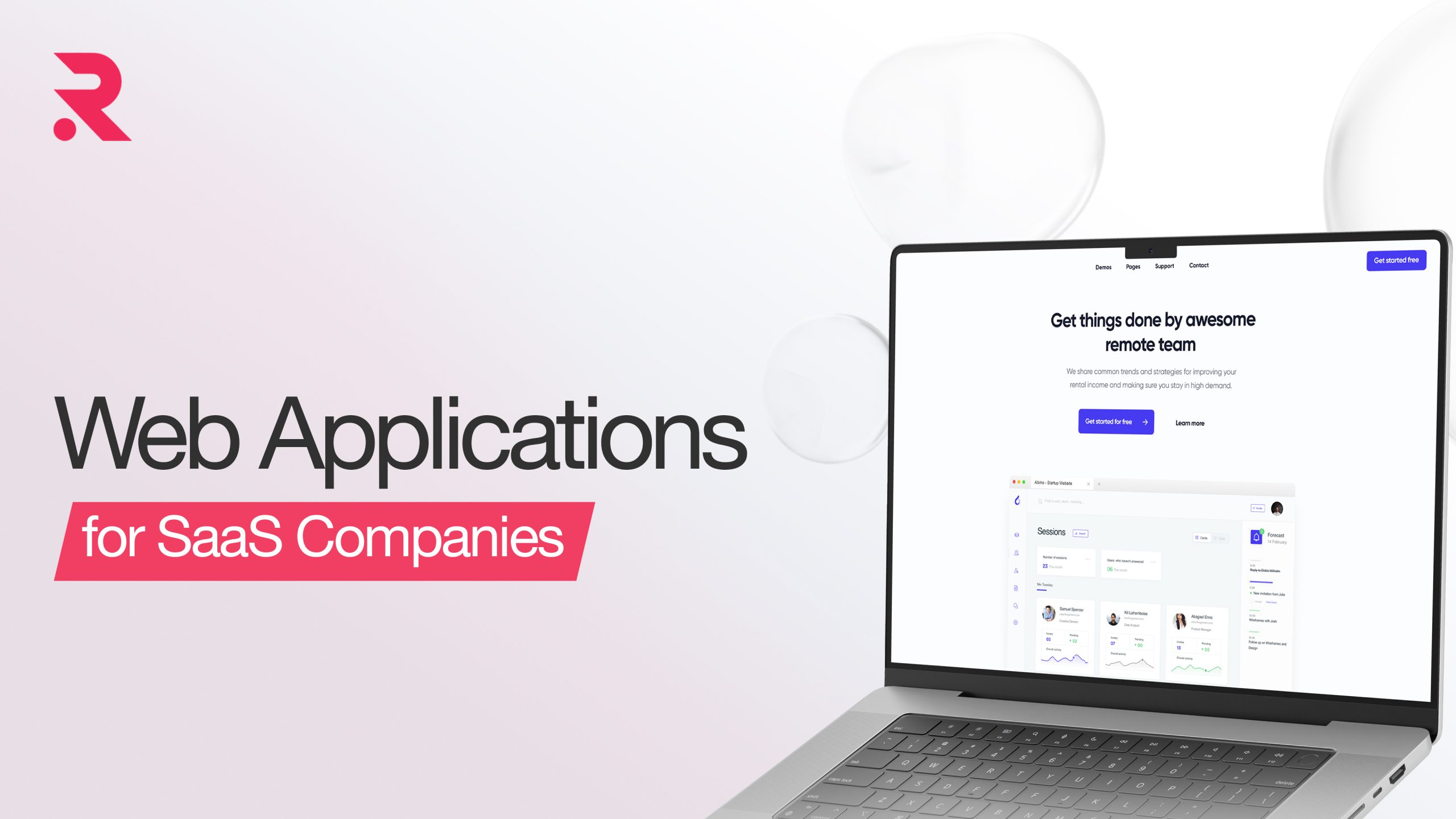Ecommerce Web Development Best Practices to Increase Customer Loyalty
- January 31, 2025
- by Tarun


In an environment where long-term relationships are vital, increasing customer loyalty really is not just a business goal but a strategic development of a firm as a whole. With excellent ecommerce web development best practices, the most effective method is undoubtedly to improve customer retention. Due to the current competitive landscape within ecommerce, organizations are making a dynamic effort to use constant differentiation strategies to retain and maintain customer bases.
A well-designed, effective, and user-friendly website can be a formidable strategic asset in nurturing customer loyalty. For businesses whose transactions are usually larger and far more complex, it is especially vital that the site is adapted to the very peculiar needs of such business customers. This blog talks about the best ecommerce web development best practices so that organizations can realize stress-free, enjoyable experiences that lead to better customer engagement and longevity in customer relationships.
Mobile-First Design
Since more and more people are surfing the internet through their mobile devices, mobile-first design has almost become one of the top web development best practices. What makes mobile-first design apart from being mobile responsive is the fact that it’s not just making websites fit really well into smaller screens, but mobile-first design sees to it that the mobile experience is considered even before coding begins.
Why is Mobile First a top Web Development Best Practice?
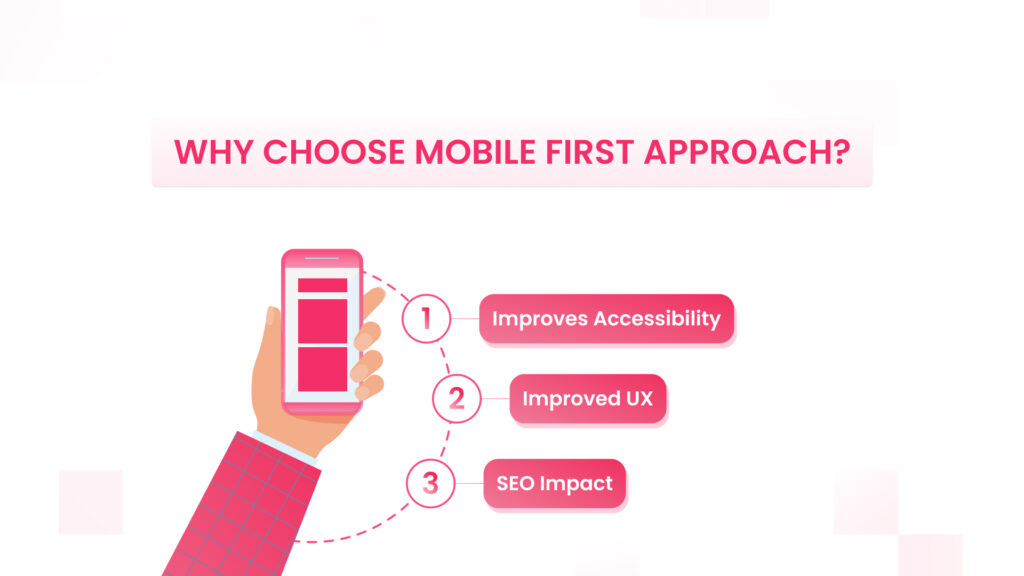
- Accessibility: People don’t use their desktop PC really at all times and now make their buying decisions on the go. Mobile-friendly website makes sure that their needs and those of others can be accessed at anytime from anywhere.
- Improve UX: An exciting user experience results from the mobile-first design approach, encouraging a habit of planning with a simplified layout. This approach has proven to be more engaging for both mobile and desktop users.
- SEO Impact: Search engines, especially larger companies like Google, are moving toward mobile-first indexing. Therefore, the version of your website that is viewed on a smartphone will be considered your most important one and have a positive effect in your search ranking and visibility.
Mobile-first does not only meet the needs of your users. It also allows for seamless experiences that make customers keep coming back.
Improve User Experience and User Interface
One of the important aspects of creating and keeping a customer is the presentation and concise user experience. This shows UI and UX design focus on how users will navigate the website. Also how the users locate the products, and find their way to making full purchases. It is vital because eCommerce deals with complicated pricing, purchases, and extra specifications. The main thing is to make it really intuitive.
Key Considerations for UI/UX
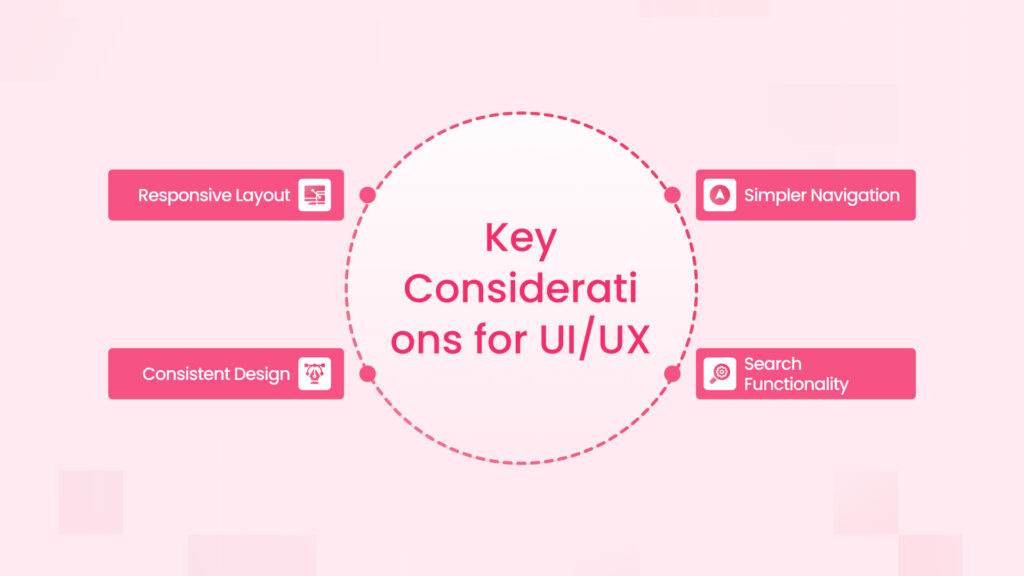
- Simpler Navigation: Drop down and categorize product categories as easily as possible using filters and options. This helps users to find right away what they are looking for through a clear and organized menu structure.
- Search Functionality: The robust feature of the search function tends to quickly deliver specific category of information being searched for. Like those concerning the evaluation of star ratings, the price of items wanted, a choice of sizes, etc.
- Consistent Design: Keeping uniform fonts, colors, and button styles through the whole site. Improving an interface is more of an emotional science because when an interface is consistent, the user becomes comfortable with it. Hence wants to prolong their visit to explore further.
- Responsive Layout: Wherein each item on the page will be optimized for flexibility and reality, that it can come as much as required, depending on any particular orientation and size of screens. Customers can perceive unique views of your site at different device sizes through an updated design.
A user-friendly website guides an intuitive purchase experience, so searching through more products and services on it is more likely.
Personalization
In ecommerce web development, personalization has a significant influence on customer loyalty reactions. The members can experience a tailored engagement that can lead to a strong impact on the consumer relationship. By this, end-customer benefits can contribute highly towards revenues.
Personalization Strategies
- Account-Based Functionality: It allows for the identification and tracking of specific account information, such as purchase history, products re-ordered, users within an organization, etc. For a marketing site that requests harnessing this functionality, simply integrate the website with existing billing and tracking software.
- Customized Product Suggestions: Browse the activities and products while offering similar items to what they bought or visited last.
- Targeted Content: Consider creating personalized content, such as whitepapers, case studies, and blog pieces based on the customer’s past interactions. Then communicate that to them to demonstrate that you mean business in terms of addressing their business challenge, really.
Diminishing doubt and strengthening personal connections, yet at the same time, it has facilitated economic growth and personalization.
Performance Optimization
Almost all users will instantly close the window if it doesn’t load right or if it favors poor server performance. For marketing reasons, the economic consequences would be terrible.
Web Development Best Practices for Website Performance
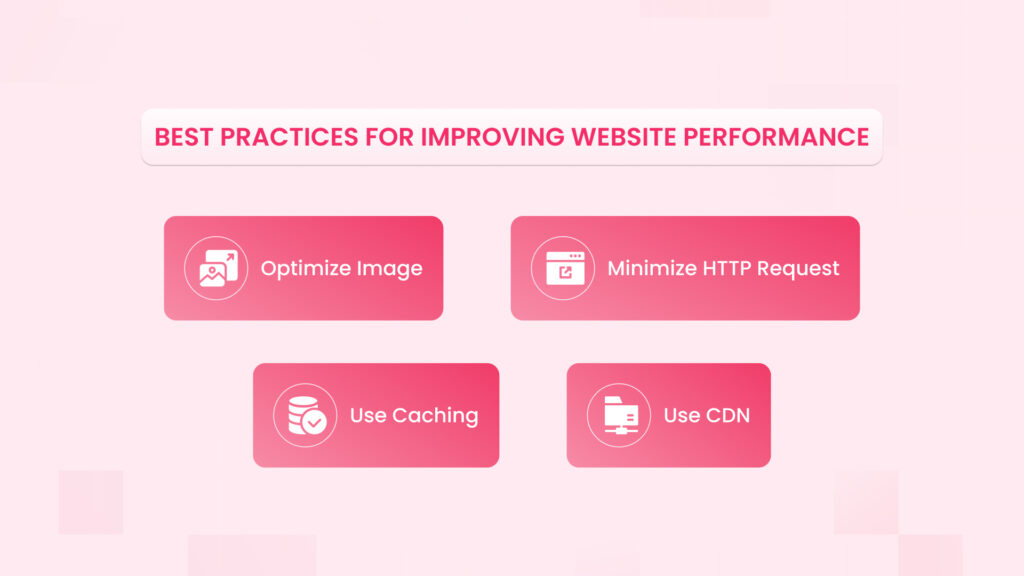
- Optimize Images: Find optimized images that are displayed on the website. Having large images can really slow-down loading. Compress images without decreasing quality and make sure they will load faster.
- Minimize HTTP Request: Each and every element on your website makes an HTTP request. Limiting the number required would lead to faster than good load times.
- Leveraging Caching: Store a cached version of your site in the user’s browser, so that visitors do not have to fully load each of your pages each time they visit. In this way, it helps to reduce the load time and improve overall experience.
- Use a Content Delivery Network (CDN): A CDN spreads the content of your website across multiple servers, wherever they may be. It makes it possible for the site’s audience to be closer to a server, thus takes less time for loading.
Fast-loading websites keep users engaged. Fast loading time gives the best site experience to repeat many visits and grow long-term user loyalty.
Need Reliable Web Development partner to help grow your Business?
Our Experts Can Help!
Clear Call-to-Action (CTA)
Call-to-action (CTA) buttons navigate visitors to make purchases in the buying journey. Adding a product to a cart, requesting a quotation, or dealing with customer support successfully enhances users’ engagement and ultimately instigates their loyalty.
Effective CTA Strategies
- Strategic Placement: Place them near product descriptions, at the very end of blog posts or at the beginning of landing pages simply where the customers will engage with CTAs the most.
- Proactive Language: Using action-oriented language encourages immediate response from users, such as “Get Started,” “Request a Quote,” or “Add to Cart” text.
- Design for visibility: Contrast color usage, clear typography and a dominant position on the page indeed stand out the CTA in web design.
CTAs need to be clear and compelling enough to guide consumers to the next step, helping them out to complete their purchases and keep them coming back for future transactions.
Reliable Payment Solutions and Secure Checkouts
A secure, seamless payment process is non-negotiable in securing customer loyalty. If the process of checking out a purchase becomes exhaustive, it will likely turn away potential customers with worries regarding safety.
Best Practices for Payment Solutions
- Multiple Payment Options: Multiple payment options, such as bank transfer, credit card, and purchase orders, are set according to your customers who wish to use them.
- Secure Payment Gateways: Employ trustworthy and reliable payment gateways to guarantee the encryption and security of customer data. Show security badges to reassure customers.
- Streamlined Checkout Procedure: Steps and the count of fields may be decreased to make the checkout easier for use. This is significant because the greatest consumers would regard a quick and easy checkout process to be crucial for keeping them loyal.
- Invoicing Opportunities: Many deals with B2B generally need invoicing, primarily for those who do not pay immediately. Instead, consumers can request the provision of an invoice download service for their orders.
A convenient and safe checkout can greatly help in motivating repeat orders and decrease friction and store the client’s trust.
Comprehensive Product Information and Transparency
In ecommerce, one of the most significant developments relates to providing extensive product information. Thus, for a sale, most buyers require the most detailed specifications, pricing, availability, and other information before they ultimately proceed with such a purchase.
Essential Product Information
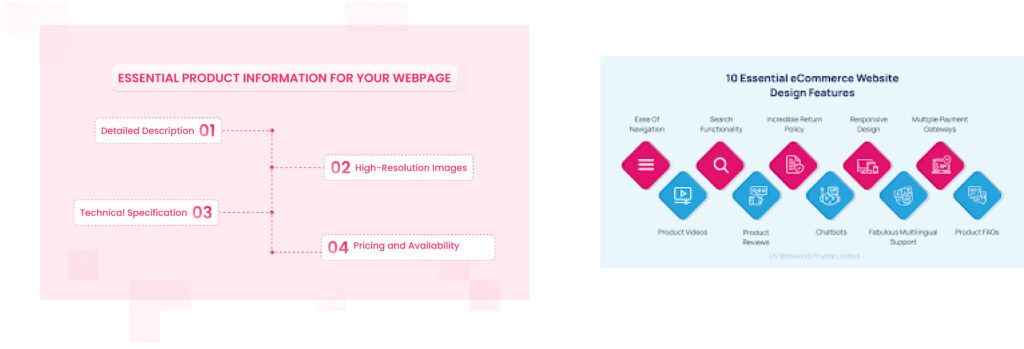
- Detailed Description: Write descriptions of all products with clarity and brevity that tell what makes the product special, how it helps the customers, and what the features of the product are.
- High-Resolution Photos: Select and highlight your product with several pictures or promotional movies. You could find several angles in one image in one picture so that all aspects of your product can be observed- from top to bottom, from left to right, from front to rear, and vice versa.
- Technical Specification: For the technical savvy, add an option to download datasheets or manuals of your products. This will build up trust.
- Pricing and Availability: Inform them about prices and availability of products accurately. Customers often desire information about how much is left in stock and how long it might take to deliver given the huge demand for the product.
When information is available and easily found in one place, customers are more likely to repeat business as well as trust.
Need a future-proof Ecommerce store or Mobile app?
Our Experts Can Help!
SEO: Web Development Best Practices
Most Web development best practices include SEO. The more optimized the website becomes, the better the chances that it will be found via search engines when someone searches for a product. Once these best practices are applied, the increased visibility of the site in search results could drive organic traffic to the ecommerce store.
SEO Best Practices
- Keyword Research: To establish what exactly your target comprises, have keyword research carried out and place these keywords strategically in product description-wording, blog content and metadata.
- Optimized Content: Make the content of high-quality information that serves the needs and concerns of your audience well. Regularly update your content to keep it relevant and fresh.
- On-Page SEO: Ensure a product page uses optimized titles, meta descriptions, and headings for each item. Make sure you use alt text to optimize images for better file names.
- Mobile-first Design: You must also make sure your site is mobile-optimized because it is more likely to find favor in search engines, after all they are specifically tuned to favor the mobile devices.
An optimized website not only improves your website rankings in search engines but also improves the visibility of your brand and attracts new customers, driving long term loyalty.
Need SEO guidance and support to boost your website rankings?
Our Experts Can Help!
Conclusion
In ecommerce, web development best practices revolve around doing what’s best to achieve increased customer loyalty. When customers experience a finely furnished, responsive, fast-loading, well-intended, and clarity-based website that pleases the initial access, it seems difficult for them to reject the same place for their next shopping trip. Implementation of strategies such as mobile-first design, personalization, clear CTAs, secure checkout, and all-encompassing product info creates more meaningful and effective online experiences, thus boosting loyalty.
In ecommerce, customer loyalty doesn’t just revolve around top-notch products; rather, it involves the entire experience, enabling a customer to feel appreciated, supported, and secure in making the decision to return and buy from you over and over again.
 Shopify
Shopify